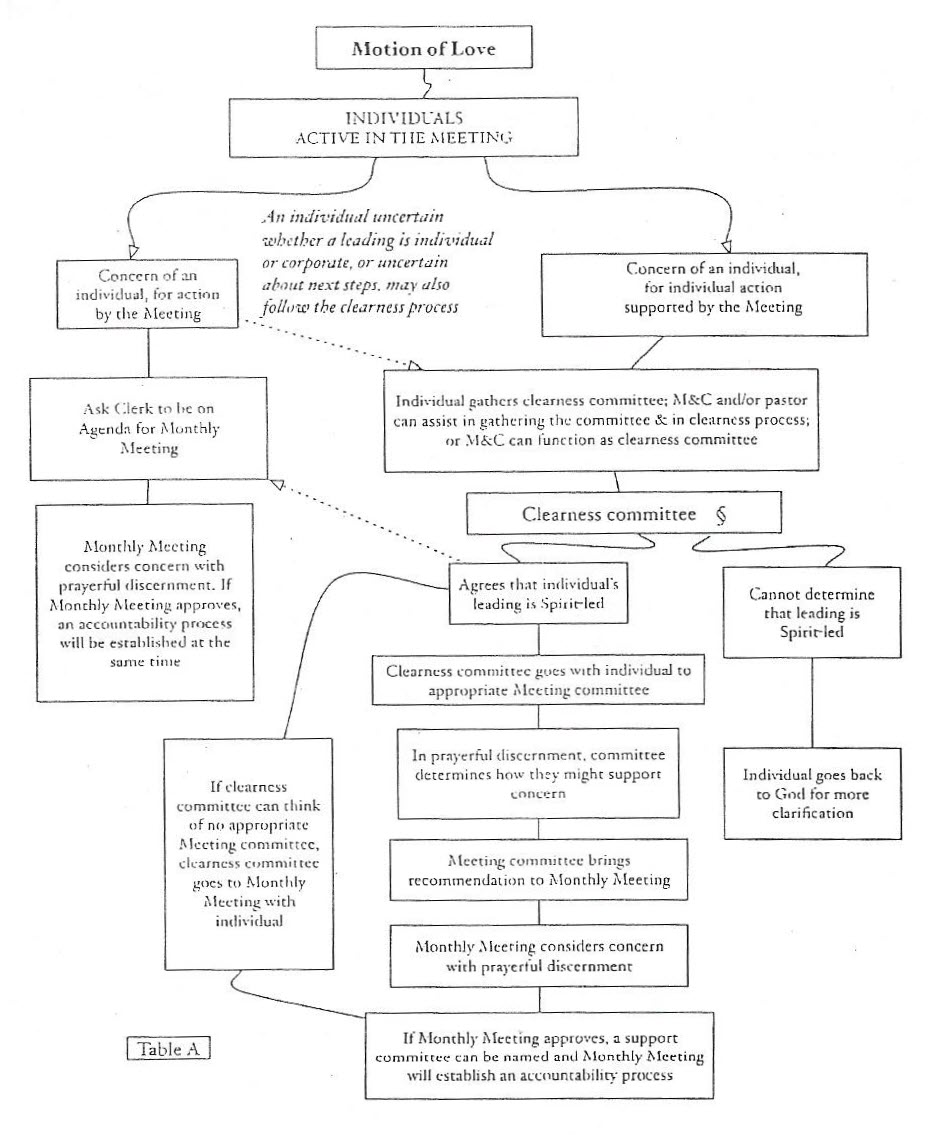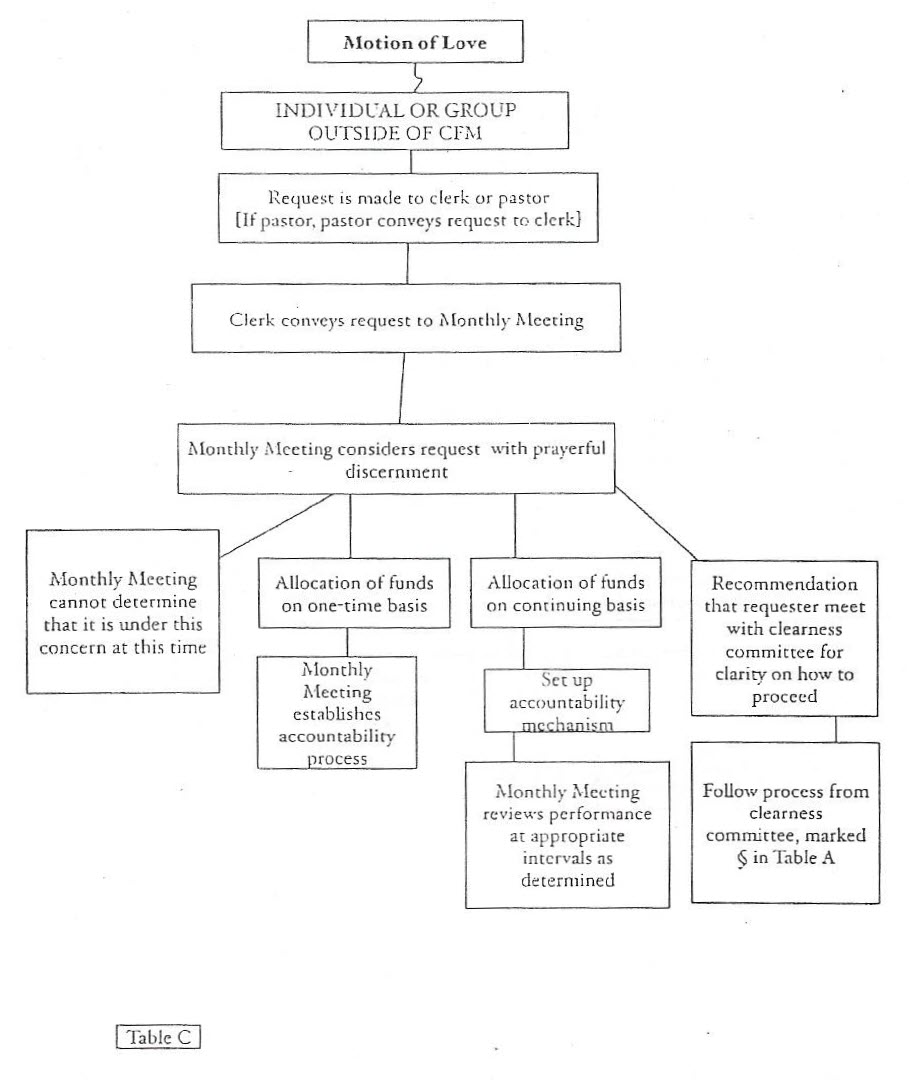In 2008, one of our former ministers, Dan Kasztelan, wrote a booklet entitled Living with the Body of Christ: A Field Guide to Quaker Process. To share this valuable information about how Friends make decisions during monthly meeting, sections of this booklet are being posted via the online Traveling Friend. This is the sixth installment of an eight-part series. You can read the entire booklet, complete with recommendations for further reading and end notes, by clicking here.
The Philadelphia Yearly Meeting Faith and Practice of 2002 defines the Quaker use of concern in this way: ‘‘A quickening sense of the need to do something about a situation or issue in response to what is felt to be a direct intimation of God’s will.” The Quaker use of leading is defined as: ‘‘A sense of being called by God to undertake a specific course of action. A leading often arises from a concern.”
A great deal of business considered in Monthly Meeting is generated by the ongoing responsibilities of the Meeting’s standing committees. But sometimes an individual or group within the Meeting (either a committee or a group of Friends with a common concern) wants to ask for the Meeting’s support of a leading, or the Meeting’s agreement to share a concern. Sometimes the request for the Meeting to take some kind of action to share a concern comes from outside the Meeting—from a group of concerned neighbors, maybe, or from the Peace and Social Concerns Committee of a Yearly Meeting several states away.
It can be difficult for newcomers to sort out how leadings and concerns are brought forward for community discernment. The following flow charts are partly descriptive, partly suggestive—and even partly conjectural—on how a leading or concern is brought through successive discernment processes until it comes to Monthly Meeting for discernment by the gathered community. In each case, the leading or concern is indicated as beginning with “a motion of love,” which is the phrase that John Woolman frequently used in his journal to indicate the first stirring of a leading or concern.
Because these flow charts are intended to be a description of a tradition which probably varied and varies widely, and because they can rely on no creed for their validity, I preface them with our famous Quaker postscript from the Elders at Balby, 1656:
Dearly beloved Friends, these things we do not lay upon you as a rule or form to walk by, but that all, with the measure of light which is pure and holy may be guided: and so in the light walking and abiding, these may be fulfilled in the Spirit, not from the letter, for the letter killeth, but the Spirit giveth life.



